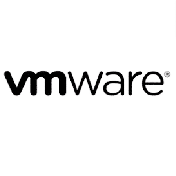Seminarinhalt
Course objectives
At the end of this course, the learner should be able to:
- Describe the objectives and purpose of this course
- Discuss the topics addressed in this course
- Describe the benefits of data reduction technologies
- Perform space reclamation
- Describe data reduction technologies: deduplication, compression, and data packing
- Perform a data reduction estimation
- Perform an online virtual volume conversion
- Describe System Reporter capabilities
- Use SSMC and the CLI to run reports
- Use the CLI stat commands to look at realtime statistics
- Use HPE Primera app volume sets (AppVVsets) in performance context
- Use the SSMC Workload Insights feature for performance reasons to isolate application spikes and trends
- Understand the SSMC Workload Insights concept of a performance score
- Understand the advantages of the Topology Insights feature to pinpoint performance bottlenecks
- Describe basic HPE Primera UI monitoring
- View, interpret, and manage system events and alerts
- Use the checkhealth command for troubleshooting
- Work with alert notifications for System Reporter
- Monitor and manage the event log
- Forward events to syslog server
- Explain SNMP settings and capabilities
- Describe the SMI-S standard, WBEM initiative, and HPE Primera CIM support
- Explain REST API use
- Describe the advantages of Priority Optimization and Quality of Service (QoS)
- Discuss the performance implications of Priority Optimization
- Administer Priority Optimization
- Monitor the impact of Priority Optimization
- Create a scheduled and immediate snapshot
- Export a snapshot
- Perform a recovery using a snapshot
- Work with a clone
- Describe the key features, benefits, and advantages of Remote Copy
- Explain different types of Remote Copy implementations
- Explain the differences between synchronous and periodic asynchronous replication modes
- Discuss different failure scenarios
- Perform a failover of a Remote Copy group
- Briefly describe data migration, high availability, and disaster tolerance solutions
Programm
- Data reduction introduction and overview
- Zero-detect and thin persistence
- Space reclamation on Windows, Linux, VMware® • Block alignment
- Thin persistence technology
- Compaction and overprovisioning
- Data reduction technologies
- Deduplication, compression, and data packaging
- Savings estimation
- Online virtual volume conversion (dynamic optimization)
Module 2: Monitoring and Reporting
- System Reporter introduction
- Data retention
- SSMC System Reporter options
- Types of reports
- Default reports in SSMC
- Report controls
- Report templates
- Creating historical and real time reports
- Scheduling/emailing reports
- CLI reporting
- Performance view
- Analytics and workload Insights
- Application volume sets
- Topology Insights
- Data Services Cloud Console
- Data Ops Manager
- Primera UI monitoring overview
- On-node monitoring overview
- Monitoring and reporting
Module 3: Events and Alerts
- Alerts and events overview • Managing alerts—SSMC/CLI
- Alerts in Data Services Cloud Console
- Managing events—SSMC/CLI
- Alerts and events tiering
- Alert spare part notification
- Syslog support
- The checkhealth command overview and use
- Troubleshooting
- System Reporter performance alerts management
- SNMP overview
- SNMP use—MIBs, alert traps
- SNMP management
- CIM API overview
- HPE Primera CIM API
- About SMI-S
- CIM standard
- CIM management
- REST API overview
- REST API usage
Module 4: Priority Optimization/QoS
- Introduction and features
- How does it work
- Examples
- Configurable parameters and their meaning
- Configuring and managing via SSMC
- Configuring and managing via CLI
- Monitoring via SSMC and CLI
- HPE Primera Priority Optimization
- Priority Optimization using the Data Services Cloud Console and Primera UI
- Summary and best practices
Module 5: Snapshots and Clones
- HPE Primera snapshot concepts
- HPE Recovery Manager Central
- Snapshot use cases
- How snapshots work
- Working with a snapshot using SSMC
- Snapshot and Virtual Lock
- Working with a snapshot using CLI
- Primera UI snapshots and snapshot schedules
- Data Services Cloud Console protection policies and schedules
- Clone introduction and how it works
- Working with a clone using SSMC
- Working with a clone using CL
Module 6: Remote Replication
- Remote Copy introduction
- Remote Copy network transport methods
- Remote Copy group
- Replication modes
- Replication topologies
- Remote Copy operations
- Failure scenarios and failover
- Post failover actions overview
- Recover/restore after a failover
- Peer persistence overview
- HPE Cluster Extension overview
- VMware vSphere® Site Recovery Manager overview
- Data migration options overview
- HPE Primera Peer Motion
Zielgruppen
Vorkenntnisse
- HM9Q5S: HPE Primera I: Management and Connectivity
- HN5B2S: Introduction to HPE Primera (with extended eLearning)
- HN5A9S: Introduction to HPE Primera




